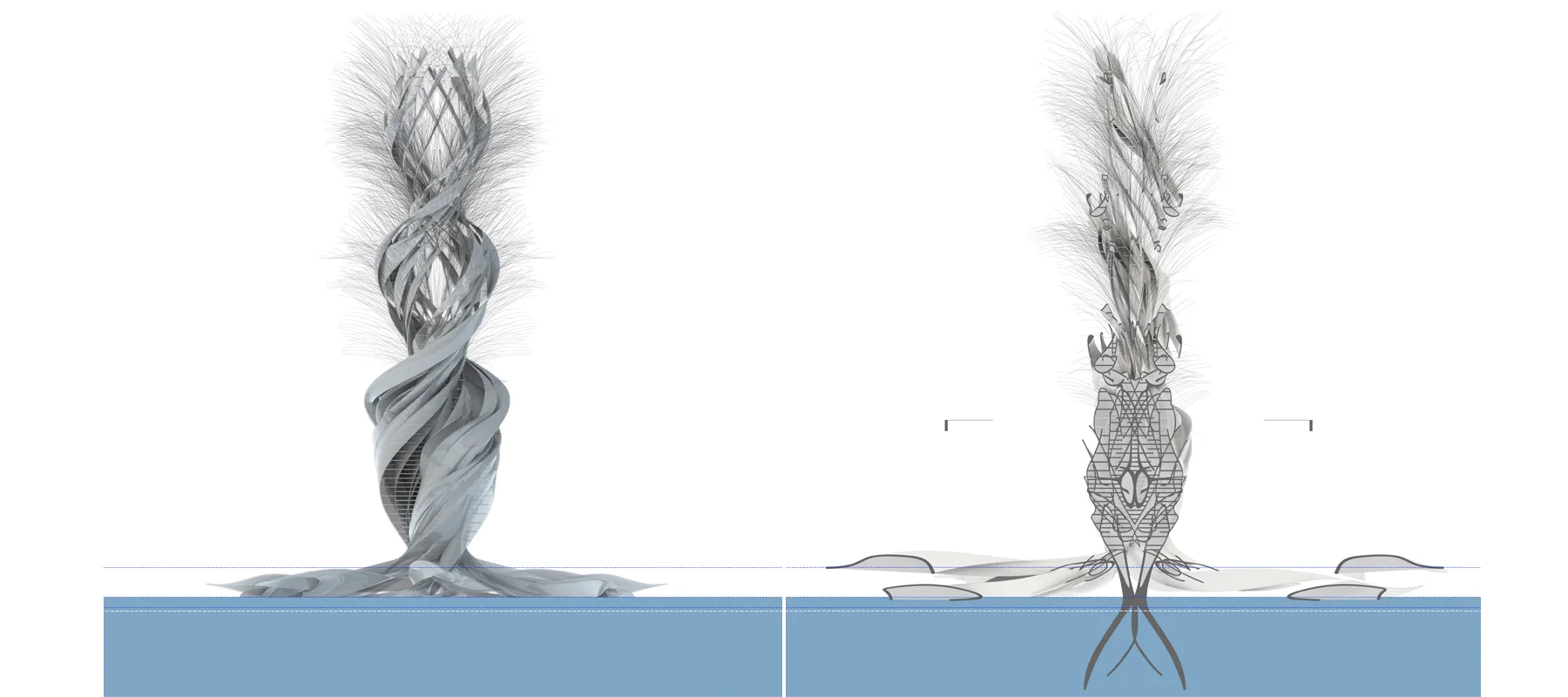new atlantis (a city for voluntary exiles) :: competition entry :: 2013
The year is 2100 and what was once called the nation of Kiribati is gone, its chains of low-lying islands have been completely submerged by the Pacific Ocean. Many I-Kiribati and their descendants have dispersed to Australia where they work in the health care industry or to New Zealand where they work as maritime shipping specialists. In these host nations, the I-Kiribati have become diffused. As a result, their culture and language has nearly died.
But rather than letting their culture become a myth of the lost like Atlantis, other I-Kiribati have refused to become refugees of climate change and elected to remain in place, at least geographically. They now live in a vertical city situated in the open ocean. The city is in shallow water directly above what used to be South Tarawa, the ex-capital of Kiribati on Tarawa Atoll. The city’s foundations are anchored into the earth, which is now approximately 20 feet underwater. It is an elaborate structure paid for through donations from the Chinese government, which in 2050, (rather than enforcing carbon reduction measures) chose to alleviate national guilt by donating billions of Yuan to island nations that were disappearing under rising oceans.
The ex-I-Kiribati living in the city of New Atlantis consider themselves exiles. They have been given an elaborate vertical structure that is largely self-sustaining and in some ways quite comfortable. But they have all lost their homes and culture, many have also lost their families. Politically, the city resides in a grey zone. The Kiribati state is no longer recognized by the United Nations, and New Atlantis is a city-state that operates outside normal international political and economic boundaries. As a result, the ex-I-Kiribati share their city with other voluntary exiles such as Eastern European digital pirates, American eco-terrorists, and escaped Chinese political prisoners.
Physically, the city is isolated, far from any significant landmass, cut-off from jet travel, and even distanced from trans-pacific shipping lanes. But digitally it is as networked as any metropolitan high-rise building. As such, it has become significant base of operations for politically and economically grey activities.
design team :: Adam Dayem, Kangsan Danny Kim






